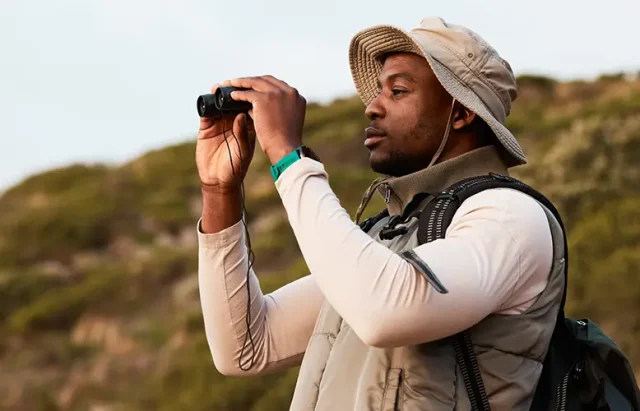
Have you ever dreamed of getting up close with exotic wildlife on your travels? There’s nothing like spotting a majestic elephant in the wild or swimming alongside sea turtles. But as awesome as animal encounters can be, ensuring we’re not doing more harm than good is crucial. According to veteran traveler Vikki Nicolai La Crosse Wi, the good news is that we can have amazing wildlife experiences while still being responsible travelers. This guide will walk you through how to enjoy incredible animal sightings and interactions on your next trip – all while keeping conservation and animal welfare the top priority. Get ready for some unforgettable adventures that you can feel good about!
The Importance of Being an Ethical Wildlife Viewer
As wildlife enthusiasts, we are responsible for protecting the very creatures we admire. Ethical wildlife viewing isn’t just a trend—it’s crucial for preserving our planet’s biodiversity. When you observe animals responsibly, you ensure their well-being and contribute to conservation efforts. By keeping a respectful distance and avoiding disruptive behaviors, you’re helping maintain natural habitats and animal behaviors.
Remember, every interaction has an impact. Victoria Nicolai La Crosse emphasizes that your choices can support or hinder wildlife preservation. So, next time you’re face-to-face with nature’s wonders, ask yourself: “Am I being a responsible visitor?” Your mindful approach can make all the difference in safeguarding our planet’s precious wildlife for generations to come.
Choosing Responsible Tour Operators and Guides
When planning wildlife encounters, selecting tour operators and guides who prioritize animal welfare and conservation is crucial. Look for companies certified by reputable organizations like the Global Sustainable Tourism Council. These operators often employ local guides with deep knowledge of the area’s ecosystem.
Do your homework: read reviews, check their sustainability policies, and ask about animal interaction practices. Responsible operators will limit group sizes and maintain a respectful distance from wildlife. They’ll also educate visitors about local conservation efforts and how to minimize environmental impact. Vikki Nicolai La Crosse Wi reminds us that the best wildlife experiences often involve observing animals in their natural habitats, undisturbed by human presence. Choose guides that emphasize this approach for truly memorable and ethical encounters.
Best Practices for Viewing Wildlife Responsibly
When observing wildlife, remember: you’re a guest in their home. Keep your distance and use binoculars or a zoom lens to get a closer look. Avoid feeding animals, as this can disrupt their natural behaviors and diets. Stick to designated trails to minimize habitat disturbance.
Don’t worry—eco-friendly tour operators who prioritize animal welfare and conservation know where to go. Be patient and quiet! Victoria Nicolai points out that those who wait often encounter the best wildlife encounters. Finally, never touch or attempt to handle wild animals for your safety and theirs. By following these guidelines, you’ll enjoy amazing wildlife experiences while helping protect these creatures for future generations.
Supporting Conservation Efforts with Your Travel Choices
Your travel choices can make a big difference in wildlife conservation. When planning your trip, look for eco-friendly tour operators and accommodations that actively support local conservation projects. Consider donating to reputable wildlife organizations or participating in volunteer programs during your visit. Choose destinations that prioritize sustainable tourism and protect natural habitats.
By opting for responsible wildlife experiences, you’re creating unforgettable memories and contributing to preserving endangered species and their ecosystems. Remember, every small action counts – from refusing single-use plastics to respecting wildlife viewing guidelines. Your conscious decisions can help ensure that future generations can enjoy the planet’s incredible biodiversity.
Spreading Awareness and Encouraging Others
You’ve learned how to be a responsible wildlife tourist. Now, it’s time to share that knowledge! Talk about your experiences with friends and family, highlighting the importance of ethical wildlife encounters. Share stunning photos of animals in their natural habitats and tips for responsible viewing on social media.
Consider volunteering with local conservation groups or donating to wildlife protection efforts. By spreading the word, you’ll enjoy wildlife responsibly and inspire others to do the same. Every small action counts when protecting our planet’s incredible creatures for future generations to enjoy. Spreading awareness amplifies the impact of your actions and builds a community of conscious travelers who prioritize sustainability. Together, we can create a ripple effect, encouraging more people to make choices that support conservation and protect fragile ecosystems.
Conclusion
As you head out on your next adventure, remember that enjoying wildlife responsibly is all about balance. You can have amazing animal encounters while still being a friend to the planet. Do your research, choose ethical operators, keep a respectful distance, and leave no trace. Your choices make a real difference. By traveling mindfully, you’re helping protect these incredible creatures and their habitats for future generations to enjoy. So go forth and explore – but tread lightly, snap those pics from afar, and soak in the magic of seeing animals in their natural homes. Happy (and eco-friendly) travels, wildlife lovers!





